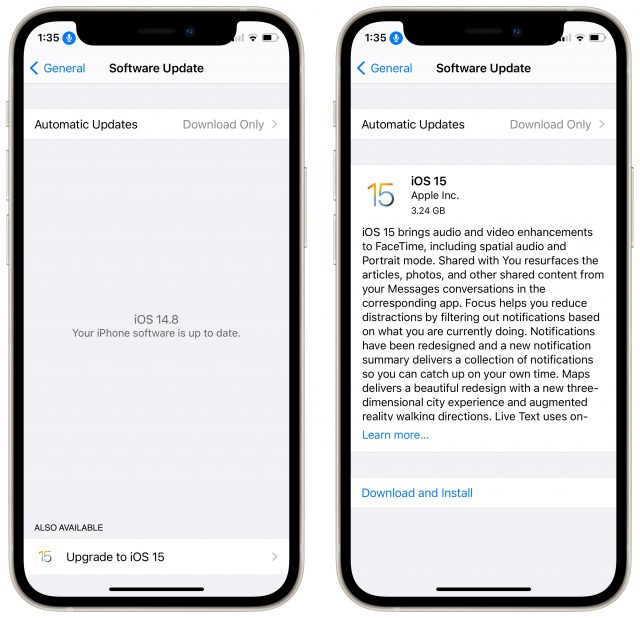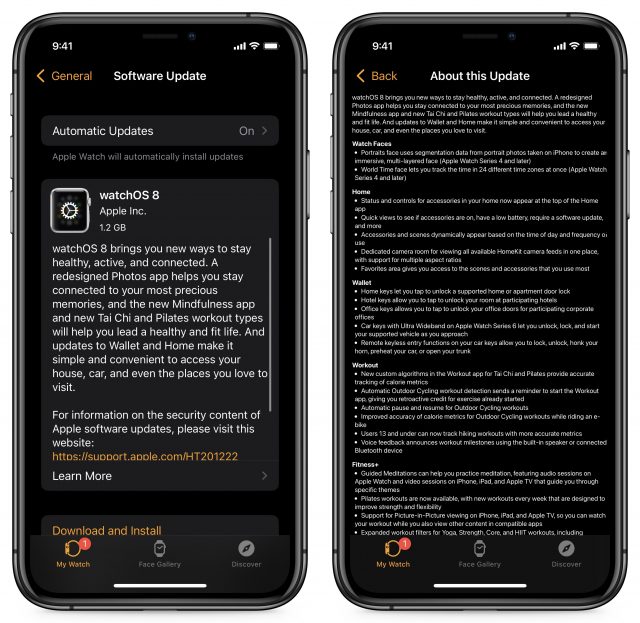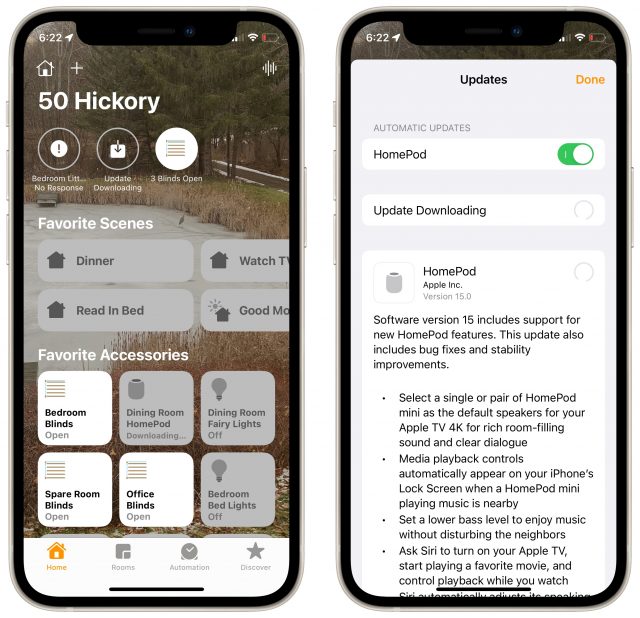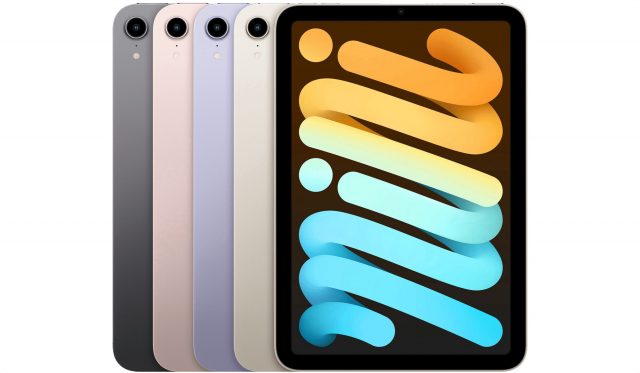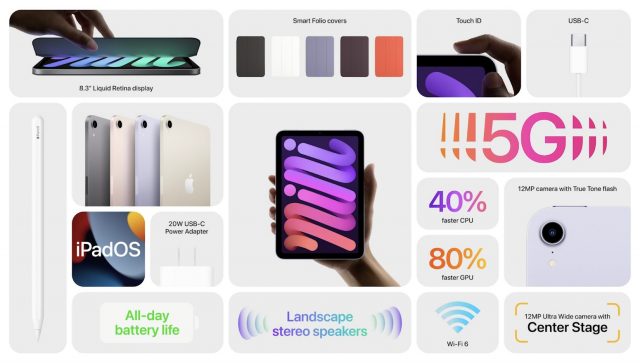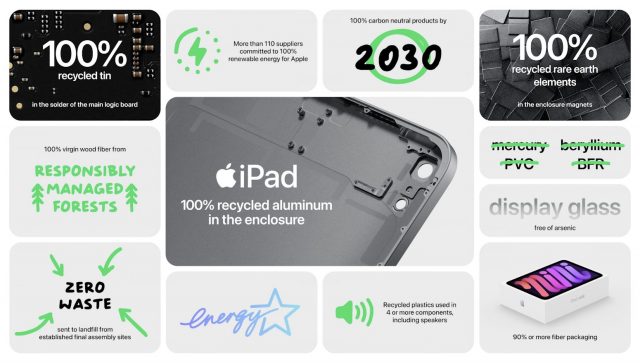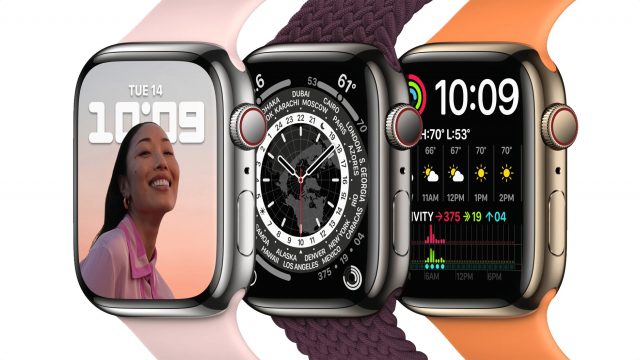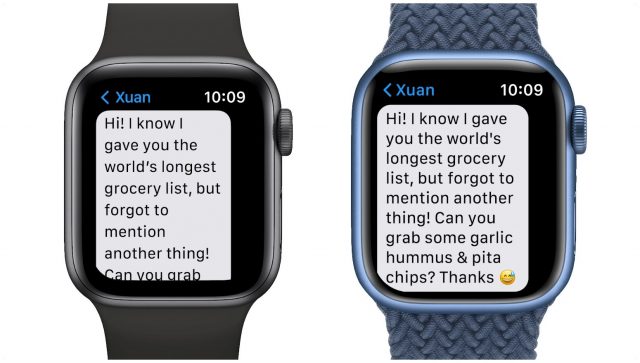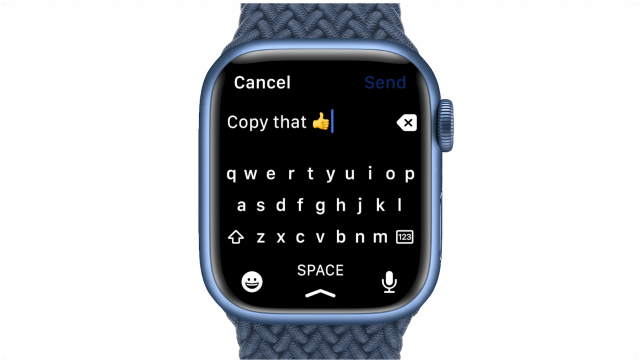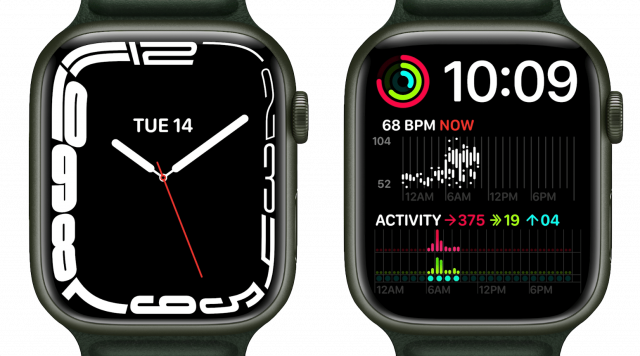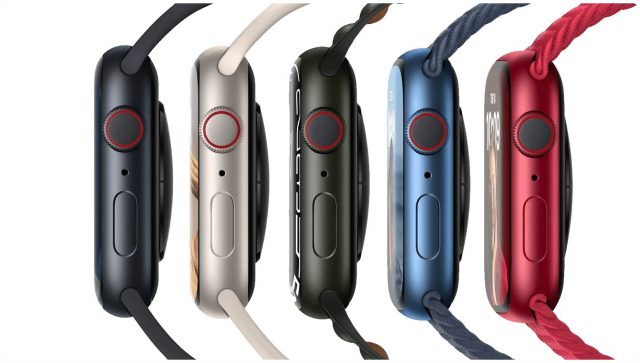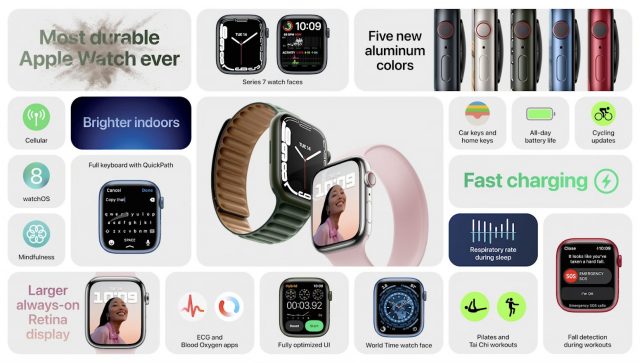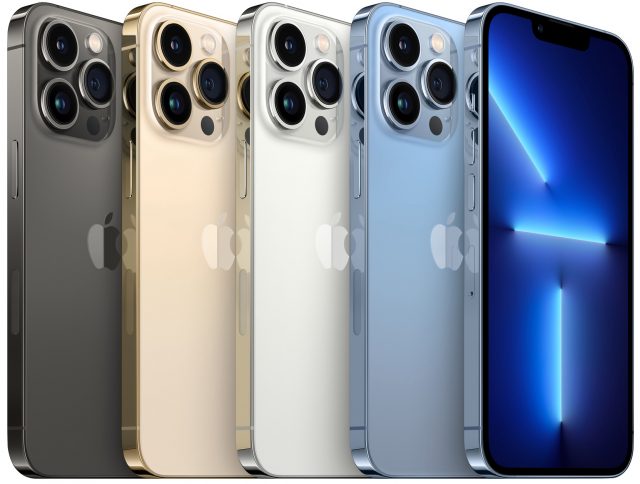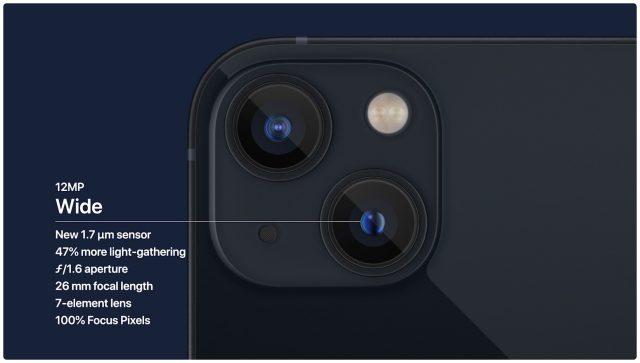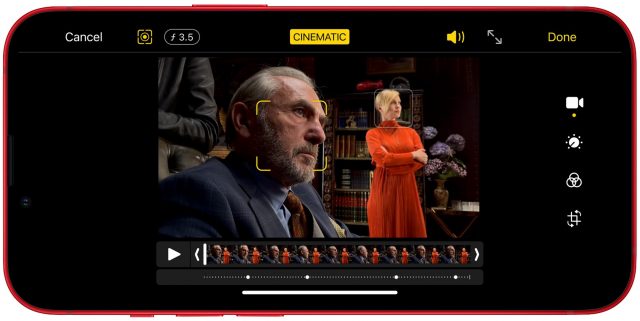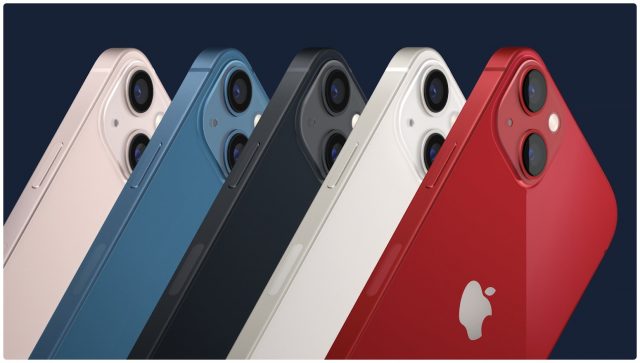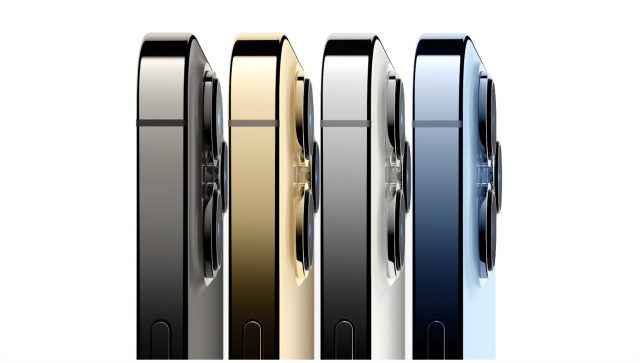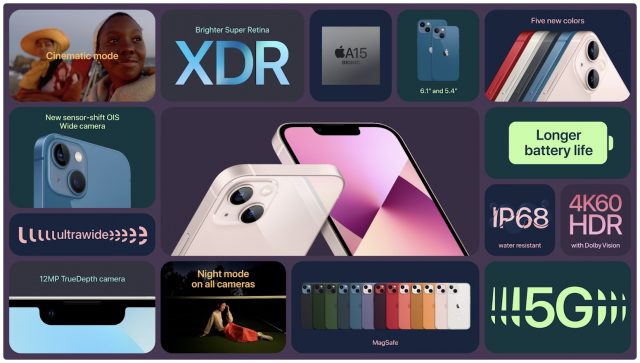#1580: iPhone 13 and iPhone 13 Pro, Apple Watch Series 7, redesigned iPad mini, and upgraded iPad, plus iOS 15, iPadOS 15, watchOS 8, and tvOS 15
It’s a big week in the Apple world! At last Tuesday’s “California Streaming” event, Apple unveiled the iPhone 13 and iPhone 13 Pro, the slightly larger Apple Watch Series 7, the redesigned sixth-generation iPad mini, and an upgraded ninth-generation iPad. We have all the pertinent details if you’re thinking about upgrading from your current gear. Today, Apple has released iOS 15, iPadOS 15, watchOS 8, and tvOS 15—you could upgrade immediately, but we recommend most people wait a week or two, just in case. Notable Mac app releases this week include Bookends 14.0, Carbon Copy Cloner 6.0.3, Timing 2021.5.2, and Mellel 5.0.8.
iOS 15, iPadOS 15, watchOS 8, and tvOS 15 Now Available
Today is the day. Apple has released iOS 15, iPadOS 15, watchOS 8, and tvOS 15. Apple’s servers will probably be slammed with all the traffic, and there may be first-day bugs. If you’re the sort who installs new operating systems right away, go ahead—the betas have been stable—but we recommend that most people wait at least a week or two. If you’re particularly upgrade-shy, Apple is finally allowing users to stick with iOS 14 and iPadOS 14, which will continue to receive security updates. Nevertheless, we always recommend upgrading eventually, when it’s convenient and sensible for you (see “Why You Should Upgrade (On Your Own Terms),” 4 September 2015).
iOS 15 and iPadOS 15
iOS 15 and iPadOS 15 offer a slew of new features. Here are the highlights:
- Massively improved FaceTime, with many of the features you’ve become accustomed to in videoconferencing apps like Zoom
- Shared With You collections in Messages, Photos, and other apps for bringing together content and links that people share with you
- Focus, which is like a more customizable Do Not Disturb. You can create multiple Focuses that allow notifications only from specified apps or contacts.
- Time-sensitive notifications (like reminders that go off at a particular time) that can optionally break through a Focus. Plus, notifications are now slimmer and have more prominent icons.
- Notification summaries, which bundle notifications that aren’t time-critical and display them to you at set times during the day
- Significant Safari changes, including the address bar moving to the bottom of the screen in iOS (so it’s easier to reach), Tab Groups, which let you organize tabs by topic or project, and voice search
- Live Text in Photos, which lets you do things like copy text from photos or search for text in photos
- New iCloud+ features, like Private Relay and Hide My Email
- Redesigned Memories in Photos
- A redesigned Weather app in iOS 15 that includes notifications for rain and other weather events. (Sadly and increasingly weirdly, Apple still has no Weather app for iPadOS. Maybe next year.)
- More discoverable multitasking capabilities on the iPad, thanks to a Multitasking menu at the top center of every window and a shelf at the bottom that shows open windows within an app
- App Library and Home screen widgets on the iPad. These features work just like they do in iOS 14, albeit with larger widgets on the iPad.
- Quick Note, which lets you create a note with a swipe up from the corner of the screen on an iPad
iOS 15 and iPadOS 15 support the same devices as iOS 14 and iPadOS 14, meaning everything back to 2015’s iPhone 6s and 2014’s iPad Air 2. Kudos to Apple for continuing to keep these older devices on the train. However, some features require newer devices, specifically the A12 Bionic processor or later. See “The Real System Requirements for Apple’s 2021 Operating Systems” (11 June 2021) for details on those.
My new book, Take Control of iOS 15 and iPadOS 15, covers these topics in detail, and we have articles planned to go in-depth on what we consider to be the most interesting features of iOS 15 and iPadOS 15 in the coming weeks. I’ve been running these betas all summer, and they’ve been very stable for me. Nor have I heard about major problems from other beta testers. However, there could be subtle but problematic bugs that won’t become obvious until these operating systems are running on millions of devices.
Apple decided to delay some promised features for later releases:
- SharePlay, which let you watch movies or listen to music with others over FaceTime
- Screen sharing over FaceTime
- Legacy Contacts, which let you designate someone to inherit your iCloud data upon your death. It was available in earlier betas (I even have my QR code printed out) but won’t return until later.
- App Privacy Report. Apple apparently planned to delay this from the start. If it’s like App Tracking Transparency from iOS 15, I would expect it to arrive around iOS 15.5 or so.
You can install iOS 15 and iPadOS 15 in Settings > General > Software Update—you’ll likely need to tap Upgrade to iOS 15 at the bottom of the screen. On an iPhone 11 Pro, iOS 15 clocks in at 3.24 GB. On an old iPad Air 2, iPadOS 15 is only 2.43 GB, perhaps because it doesn’t include code for unsupported features.
watchOS 8
The watchOS 8 update isn’t quite as exciting as iOS 15, but it still includes many nice improvements:
- Better photo support, including Portrait mode watch faces, better Memories support, and easier sharing of photos
- A redesigned Home app that better supports security cameras and scenes and displays status symbols for devices
- The option to edit text with the Digital Crown
- The capability to look up and share animated GIFs in messages
- Find My apps for locating lost devices from your wrist
- A redesigned Music app that makes sharing easier
- A new Mindfulness app that replaces the Breathe app
- The capability to track your sleeping respiratory rate
To install the update, which was 1.2 GB for an Apple Watch Series 4, open the Watch app on your iPhone and go to My Watch > General > Software Update. Remember that the download will take a while, after which the iPhone has to transfer the update to your Apple Watch through Bluetooth, which can take a couple of hours. Then, to install the update, the Apple Watch must have at least 50% charge and be connected to a charger. We recommend performing the upgrade at night.
tvOS 15
As usual, tvOS 15 didn’t get as much attention as the higher-profile operating systems. Apple delayed its main feature, SharePlay, for a future release. However, there are still a few welcome changes in tvOS 15:
- A For All of You section in the TV app, which tries to suggest content your entire household will enjoy, based on your preferences
- Shared with You, which displays shows and movies shared with you from Messages in iOS 15
- Spatial audio support for AirPods Pro and AirPods Max, plus smart audio routing for AirPods
- The capability to view multiple HomeKit cameras at once
- Stereo sound when you pair two HomePod mini speakers to an Apple TV 4K
tvOS 15 supports the Apple TV HD and Apple TV 4K.
To install the update, go to Settings > System > Software Update, or just let it install on its own at some point in the future.
HomePod Software Version 15
Finally, Apple quietly released HomePod Software Version 15. In what seems like a slight change in iOS 15’s version of the Home app, an icon for Update Downloading appears at the top of the screen. Tapping it reveals more information about the update, revealing what’s new:
- As noted above, you can now use the HomePod mini (by itself or in a stereo pair) with an Apple TV 4K.
- Media playback controls now appear on your iPhone’s Lock screen when a HomePod mini is playing nearby.
- You can use Siri on a HomePod to turn on and control an Apple TV.
- Siri automatically adjusts its volume based on the room environment and how you’ve set the loudness.
- You can ask Siri to control HomeKit devices at a specific time—”Hey Siri, turn off the kitchen lights in 5 minutes.”
- If you have HomeKit accessories with Siri support, you can use them to control the HomePod.
- If you have a security camera that supports HomeKit Secure Video, your HomePod can theoretically now alert you when a package arrives at your door.
Apple Redesigns the iPad mini, Upgrades the iPad
At Apple’s “California Streaming” event, the company unexpectedly announced an incremental upgrade to its base-model iPad and unveiled a redesigned iPad mini. Both are available to order now and will ship on 24 September 2021.
The Sixth-Generation iPad mini
The iPad mini is small and apparently easily overlooked. Apple last updated it in March 2019, and that upgrade replaced the model previously released in September 2015. So the iPad mini was long overdue for an update, but what an update it has received!
In short, Apple has turned the sixth-generation iPad mini into a diminutive version of the iPad Air, with the same squared-off industrial design and modern specs. Prices start at $499 for 64 GB of storage, with an upgrade to 256 GB for $649. That may seem high compared to the $329 starting price for the iPad, but the fifth-generation iPad mini started at $529, and that was with an old industrial design (“Apple Quietly Releases New iPad mini and iPad Air,” 18 March 2019). If you want 5G cellular connectivity, add $150 to the price, making it $649 for 64 GB and $799 for 256 GB. The new iPad mini comes in space gray, pink, purple, and starlight, which is a sort of silvery gold.
Here are the key specs of the sixth-generation iPad mini:
- A taller but slightly thinner 8.3-inch IPS Liquid Retina display with 2266-by-1488 resolution, P3 wide color, True Tone, 500 nits of brightness, and an antireflective coating
- Powered by an A15 Bionic chip, the same new chip found in the iPhone 13
- Touch ID in the top button, like on the iPad Air
- USB-C connectivity for faster data transfers and support for accessories like USB hubs, keyboards, mice, thumb drives, and even ultrasound scanners
- Optional 5G wireless with up to 3.5 Gbps download speeds
- Speakers on the top and bottom so you get stereo in landscape orientation
- Two significantly better 12-megapixel cameras. The rear camera captures video in 4K resolution. The ultra-wide front camera maxes out at 1080p, but supports Center Stage.
- Support for the second-generation Apple Pencil; like the iPad Pro and iPad Air, the pencil magnetically sticks to the side of its squared-off body
There’s one notable missing feature: the Smart Connector, which lets iPads directly connect to keyboards and cases. That means you’re limited to Bluetooth keyboards, which don’t provide as coherent an experience. It’s not too surprising, given that Apple would have to create keyboards and cases purely for the iPad mini form factor, and it might not sell in sufficient quantities for that to be worthwhile. Plus, an attached keyboard would have to be tiny.
While the iPad mini lacks a Smart Connector for keyboards, it does offer a magnetic attachment for Apple’s Smart Folio, which costs $59 and comes in five colors: black, white, English lavender, dark cherry, and electric orange.
Overall, the sixth-generation iPad mini is a decent buy at $499, particularly for someone who wants a small iPad above all else and doesn’t want a tiny keyboard attached. I’d like to see a cheaper iPad mini focused on reading, but I doubt that’ll ever happen.
Lastly, Apple emphasized the fact that the iPad mini’s enclosure now uses 100% recycled aluminum; all iPad enclosures now use 100% recycled aluminum. That may not be a reason to buy the iPad mini or any other iPad, but it’s great to see Apple reducing its reliance on virgin materials.
The Ninth-Generation iPad
Apple favored the base-model iPad with yet another update, keeping it fresh while retaining its bargain-basement $329 price. On the outside, there’s nothing new in this ninth-generation iPad: it still has a Home button for Touch ID and still works with the first-generation Apple Pencil. But it picked up a couple of tricks from the iPad Pro:
- Center Stage: The iPad receives a huge upgrade over the 1.2-megapixel camera in the previous model, with a new 12-megapixel ultra-wide front-facing FaceTime HD camera that captures 1080p video. The ultra-wide camera enables the Center Stage feature, which uses machine learning to keep the subject in the frame, making it seem as though the camera can pan back and forth.
- True Tone display: True Tone started as an iPad Pro feature but has now worked its way down into the base iPad. True Tone relies on a built-in light sensor to adjust the display’s color temperature based on ambient lighting conditions.
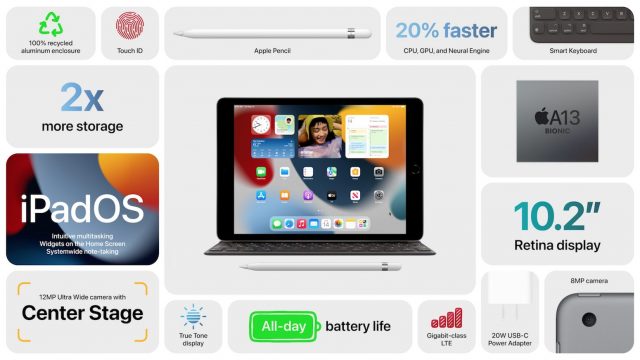
The ninth-generation iPad is powered by the A13 Bionic chip, the same chip in the iPhone 11 series and a generation newer than the A12 Bionic in the previous model. It may not compete with the A15 Bionic in the iPad mini, but it’s plenty powerful and helps keep the price down.
The ninth-generation iPad also comes with double the storage of the previous model, starting at 64 GB. A 256 GB configuration is available for $479. Add $130 if you want 4G LTE cellular connectivity, making the price $459 for 64 GB or $609 for 256 GB. It’s available in space gray and silver.
Particularly with these upgrades, the base-model iPad remains one of Apple’s best values, and it’s all the iPad most people need.
Apple Watch Series 7 Brings Modest Tweaks
Rumors of a radically redesigned Apple Watch with flatter edges mimicking the iPhone design language did not come to pass. The Apple Watch Series 7 that Apple unveiled during its “California Streaming” event looks much like its predecessors, with modest upgrades compared to blockbuster Apple Watch unveilings of yore.
If you squint, though, you’ll see much that is new.
Apple has fiddled with the watch’s dimensions. The Apple Watch Series 7 boasts 20% more screen area than the previous generation and 50% more than the Series 3. The display’s borders have been reduced to 1.7 mm, a 40% difference compared to Series 6, “while barely expanding the dimensions of the watch itself,” according to Apple. Note that the Apple Watch Series 7 will come in 41 mm and 45 mm sizes, replacing the 40 mm and 44 mm Series 6 models. They remain compatible with existing bands.
The case and display have softer, more rounded corners, and they merge more seamlessly than they do on earlier models. A new “refractive edge” on the display means full-screen apps and faces appear to conform to the case curvature.
The always-on screen is 70% brighter indoors when your wrist is down, “making it even easier to discreetly check the time,” Apple quips.
Apple tweaked the watchOS interface with the Apple Watch Series 7’s larger size in mind. The company redesigned and enlarged buttons in apps like Activity, Alarms, Calculator, and Stopwatch to make them easier to tap on the expanded display. About 50% more text (such as messages or emails) fits on the screen now, with less scrolling.
watchOS 8 on the Apple Watch Series 7 adds a full keyboard that lets you enter text either by tapping or by sliding your fingertip from character to character in a manner that has long been common on smartphone keyboards. Apple’s version of this system, dubbed QuickPath, taps into machine learning to predict the words you’re trying to enter. The Scribble text-input method is easier to use on the larger screen, too.
Durability gets a boost. Apple claims that the display is more crack-resistant due to a new “geometry.” The Apple Watch Series 7 is also the first model to provide IP6X dust resistance along with the usual swimmer-friendly waterproofing.
Charging for the Apple Watch Series 7 is up to 33% faster than the Series 6. With a new charging architecture and a USB-C puck, achieving an 80% charge takes only about 45 minutes. If you like to wear your watch to bed instead of leaving it to charge overnight, 8 minutes of pre-snooze charging is enough for 8 hours of sleep tracking.
No New Health Sensors but New Fitness Tweaks
The Apple Watch Series 7 debut was humdrum in that Apple didn’t trot out any new physical health sensors. On the software side, though, watchOS 8 brings new health features to both the Series 7 and other models.
Happily for those of us who bike a lot, Apple put a lot of emphasis on cycling. watchOS 8 can analyze GPS, heart rate, accelerometer, and gyroscope data to detect when you begin a bike ride, and it prompts you to start an Outdoor Cycle workout if you didn’t initiate one manually. This works on the Apple Watch SE, Series 6, and Series 7.
For those who ride electric bicycles (see “Some Fancy E-Bikes Have Their Own Apps. We Tried Two,” 2 April 2021), the Apple Watch can more accurately measure active calories with an updated workout algorithm that evaluates GPS and heart rate to better gauge when users are pedaling with electrical assistance versus leg power alone.
Apple also improved fall detection. With watchOS 8, fall detection algorithms better detect falls during workouts—including cycling—and have been tuned to recognize the unique motion and impact of falls during a bicycle ride and other exercise types. As with general fall detection, the watch can call emergency services if the user is incapacitated.
For all kinds of athletes, new voice feedback through the watch’s built-in speaker, or through AirPods or other Bluetooth earbuds, announces milestones and activity ring status, helping users stay focused during workouts.
New Faces, Colors, and Bands, Of Course
There are (natch) new watch faces. A dynamic Contour face animates when the wrist is raised, smooshing the dial out, cartoon-like, to the screen’s edge. And a new Modular Duo face exploits the watch’s expanded dimensions with two extra-large, data-rich complications.
The aluminum Apple Watch Series 7 comes in a new complement of colors: midnight (dark gray), starlight (silvery gold), green, blue, and PRODUCT(RED). Apple says that stainless steel and Apple Watch Edition models continue in their existing colors.
Fans of Nike and Hermès Apple Watch variants get fancy new watchbands, as per usual. But if you want to keep using your existing bands, rest assured they’ll still work. Apple is offering fresh new colors across its band catalog, too.
Should You Upgrade?
The new watches start at $399 (but go up fast from there) and are due later this year. Apple continues to sell the Apple Watch SE, starting at $279, and the Apple Watch Series 3, starting at $199.
Those who are happy with an Apple Watch Series 6 likely won’t feel a compulsion to get a Series 7. Although there are new features, they’re incremental for the most part.
iPhone 13 Brings Evolutionary Improvements: A15 Bionic Chip, Improved Cameras, and Better Displays
When it came to the iPhone, Apple did exactly what everyone expected at its inscrutably named “California Streaming” event, introducing the iPhone 13, iPhone 13 mini, iPhone 13 Pro, and iPhone 13 Pro Max, all powered by the new A15 Bionic chip. With the exception of slightly rearranged rear cameras and a smaller front notch, the industrial design and form factor of each model remain much the same as the iPhone 12 models from last year, with squared-off edges and a variety of colors. They’re available for pre-order now and will begin shipping on 24 September 2021.
As with last year’s iPhone announcement, Apple’s pre-recorded presentation was a firehose of detail and technical specs, far too much to convey in a coherent and useful fashion here. Instead of “speeds and feeds,” we’re once again going to focus on the important changes you need to know if you’re considering upgrading to one of these iPhones. For the rest of the details, check out these pages:
- iPhone 13 and iPhone 13 Pro main pages
- iPhone 13 and iPhone 13 mini tech specs
- iPhone 13 Pro and iPhone 13 Pro Max tech specs
- iPhone comparison tool
- Apple trade-in values and carrier deals
So what should we focus on? The cameras, of course.
It’s All about the Cameras
By now, everyone should realize that iPhones are more cameras than phones. With the iPhone 13 lineup, Apple devoted much of its engineering effort to improving both the cameras and the computational capabilities that enable impressive technologies like the new Cinematic mode.
The iPhone 13 and iPhone 13 mini still have dual-camera systems boasting a new wide camera with larger 1.7 µm pixels and sensor-shift optical image stabilization that was previously unique to the iPhone 12 Pro Max. They combine to provide improvements in low-light photos and videos. The ultra-wide camera offers a faster sensor than before.
A faster 16-core Neural Engine and new image signal processor in the A15 Bionic chip make possible three new computational photography features: Photographic Styles, Smart HDR 4, and Cinematic mode. Photographic Styles enable you to customize photographic preferences (like vibrancy) that the camera system then uses for future photos in real-time—it’s a little like automatically applying custom filters via a heavy dose of machine learning. Smart HDR 4 provides improved color, contrast, and lighting for each subject in a group photo.
Finally, Cinematic mode is essentially like Portrait mode for video, albeit only 1080p video at 30 frames per second, not the 4K video that’s otherwise possible. It automatically applies a cinematic technique called “rack focus,” the practice of changing the lens focus during a shot to emphasize different people or objects. Cinematic mode changes the focus automatically during shots, even in response to a person looking in a different direction or someone walking into the scene. You can change the focus during (tap to refocus, tap twice to refocus and lock on a person or moving object) or even after capture, and you can adjust the level of bokeh to edit the depth-of-field effect in Photos and iMovie for iOS (coming soon to iMovie for macOS and Final Cut Pro). As with most of Apple’s visually focused technologies, it demos incredibly well; the question will be if it’s useful in real-world usage.
The iPhone 13 Pro and iPhone 13 Pro Max take the camera improvements even further. As with last year’s models, they feature triple-camera systems with wide, ultra-wide, and telephoto cameras, plus an A15 Bionic with a 5-core GPU (up from the 4-core GPU in the lower-end models). All three cameras receive new sensors and lenses, complete with sensor-shift optical image stabilization.
The wide camera has larger 1.9 µm pixels to reduce noise and support faster shutter speeds, and its larger ƒ/1.5 aperture improves performance even more in low-light conditions. The ultra-wide camera has a much wider ƒ/1.8 aperture and a new autofocus system that also provides sharper details in low-light shots. More interesting for many of us are the improvements in macro photography that come from the new ultra-wide camera—you can now capture tiny subjects with a minimum focus distance of 2 centimeters, either as still images or in video, including Slo-mo and Time-lapse. Finally, the new 77 mm telephoto camera provides 3x optical zoom in, enabling the system as a whole to have a 6x optical zoom range when combined with the 2x optical zoom out.
All four models of the iPhone 13 have new front-facing TrueDepth cameras shoehorned into a smaller front notch. They’re 12 megapixels, have an ƒ/2.2 aperture, and support all sorts of Apple photo and video technologies, like Portrait mode, Portrait Lighting, Night mode, Deep Fusion, Smart HDR 4, and so on. The main difference between the front-facing cameras in the low-end and high-end models is that only the iPhone 13 Pro and iPhone 13 Pro Max support Apple ProRAW files and ProRes video recording.
Other Stuff That’s New and Improved
It would be unfair to imply that the only important changes in the iPhone 13 models are the cameras, but as you’ll see in the list of other improvements below, the rest aren’t likely to change your life. They’re all just better—you’ll enjoy better performance, better screens, better battery life, and better 5G. And that’s fine.
- A15 Bionic: Apple says the A15 Bionic is the fastest smartphone chip ever, with performance up to 50% faster than the competition. (Interestingly, Apple didn’t compare it to the A14 Bionic, suggesting that the A15 isn’t that much faster.) It provides a 6-core CPU with two high-performance cores and four high-efficiency cores for general computation, has either a 4-core or 5-core GPU for graphics, and provides a 16-core Neural Engine for machine-learning tasks. It’s based on 5-nanometer technology and has nearly 15 billion transistors. That’s shorthand for saying that the A15 Bionic’s performance is what makes the magic possible.
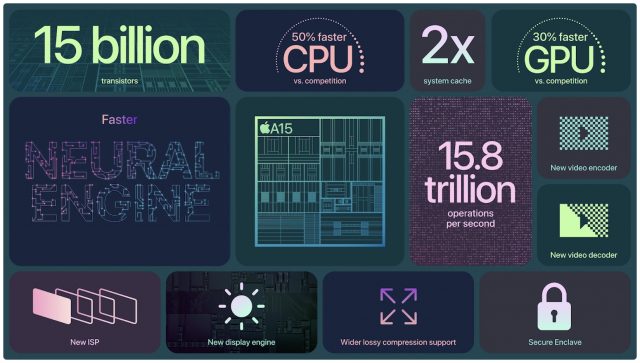
- Improved displays: The iPhone 13 and iPhone 13 mini come with an improved Super Retina XDR OLED display that’s brighter and has a higher contrast ratio for true blacks, all while being more power-efficient. The iPhone 13 Pro and iPhone 13 Pro Max up that with an even brighter Super Retina XDR display that includes the adaptive frame rate ProMotion technology from the iPad Pro. ProMotion dynamically changes the screen refresh rate as needed from 10 Hz to 120 Hz, either preserving battery life or offering smooth video for games or movies.
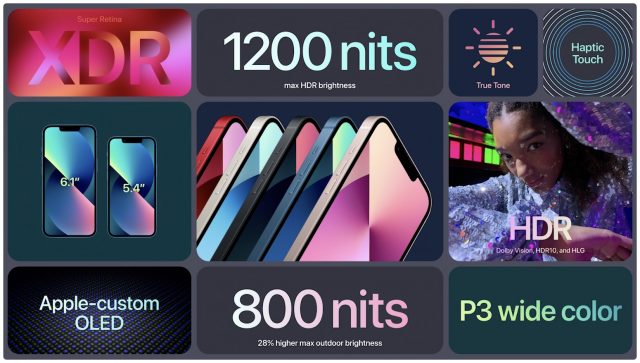
- Longer battery life: Thanks to more power-efficient components, larger batteries, and technologies like ProMotion and Smart Data mode (which switches to LTE when 5G isn’t needed), Apple says battery life on the iPhone 13 models is significantly better than on the iPhone 12 models. The iPhone 13 mini and iPhone 13 Pro offer 1.5 hours more battery life than their predecessors, and the iPhone 13 and iPhone 13 Pro Max provide 2.5 hours more than theirs.
- 5G in more countries: Although 5G isn’t yet the game-changer that the industry wants it to be, at least in the United States, Apple keeps enhancing its support. The iPhone 13 lineup supports more 5G bands, which will provide broader coverage and faster performance where the local infrastructure supports it. By the end of 2021, Apple says 5G support on the iPhone will double worldwide, with over 200 carriers in 60 countries and regions.
- MagSafe: There’s nothing new here on the iPhone side, but Apple introduced a new $59 iPhone Leather Wallet with MagSafe that magnetically attaches to the back of the iPhone and—this is the neat part—enables you to locate it using the Find My network. It’s available in a variety of colors.
Pricing and Availability
As with previous years, Apple has kept some older models available for sale, albeit in limited configurations. That provides a coherent ramp for price points, ensuring that most people who want an iPhone can find one that fits their budget.
| Model | 64 GB | 128 GB | 256 GB | 512 GB | 1 TB |
| iPhone SE | $399 | $449 | – | – | – |
| iPhone 11 | $499 | $549 | – | – | – |
| iPhone 12 mini | $599 | $649 | $749 | – | – |
| iPhone 12 | $699 | $749 | $849 | – | – |
| iPhone 13 mini | – | $699 | $799 | $999 | – |
| iPhone 13 | – | $799 | $899 | $1099 | – |
| iPhone 13 Pro | – | $999 | $1099 | $1299 | $1499 |
| iPhone 13 Pro Max | – | $1099 | $1199 | $1399 | $1599 |
It’s worth noting that all the iPhone 13 models start with 128 GB of storage, whereas last year’s iPhone 12 and iPhone 12 mini started at 64 GB. Last year also brought a $100 price jump for the iPhone 12 over the iPhone 11. This year, Apple retained the bottom price point for its new models but increased storage to 128 GB. Buying a 128 GB iPhone 12 last year would have cost you $849, whereas this year, the comparable iPhone 13 is $799. In other words, after raising the iPhone 12 price by $100, Apple dropped the iPhone 13 price by $50.
Also note that the iPhone 13 Pro and iPhone 13 Pro Max now come in a 1 TB configuration. It’s a bit pricey, but if you’re shooting video, the extra storage will no doubt be welcome. I imagine many professional photographers and videographers won’t even blink at buying that configuration.
The iPhone 13 comes in pink, blue, midnight (dark gray), starlight (silvery gold), and (PRODUCT)RED. Sadly, there’s no purple, but Apple didn’t release the purple iPhone 12 until the following year (see “Apple’s Spring Loaded Appetizers: Apple Card Family, Podcast Subscriptions, and a Purple iPhone,” 20 April 2021).
The iPhone 13 Pro comes in graphite, gold, silver, and sierra blue.
As noted before, you can pre-order the iPhone 13 models now, and the first deliveries will arrive on 24 September 2021.
Upgrade Decisions
Overall, the iPhone 13 models feel evolutionary rather than revolutionary. As with all new iPhones, there’s no question that these are the best iPhones Apple has ever made. And yes, they feature a faster A15 Bionic chip, improved cameras, better displays, longer battery life, and more 5G bands. But they probably won’t radically change the experience of owning an iPhone for you as the redesign of the iPhone 12 or the addition of MagSafe might have last year. That’s not a bad thing—the iPhone experience is already pretty darn good—but it does inform upgrade decisions.
I see two possible upgrades from an iPhone 12 model. If you want to switch from a larger iPhone 12 model to the iPhone 13 mini for a more hand- and pocket-friendly form factor, that’s a good reason, particularly since rumors suggest that the mini form factor won’t be back next year in the iPhone 14. Also, if you have an iPhone 12 or iPhone 12 mini and want a better camera or longer battery life, I could see an upgrade to an iPhone 13 Pro or iPhone 13 Pro Max for significantly better cameras and battery life. But I wouldn’t recommend going from an iPhone 12 model to the equivalent iPhone 13 model unless you’re in the iPhone Upgrade Program.
What about upgrading from the iPhone 11 era? With that, we’re into the two-year timeframe, so it’s possible, even likely, that the improved performance, better cameras, and longer battery life make that decision easier. For instance, I have an iPhone 11 Pro that has served me well. If I didn’t write about Apple professionally, I’d stick with it, but since it is beneficial to me to stay up to date with Apple’s technologies (and because I take a lot of macro photographs), I’ll probably upgrade to an iPhone 13 Pro.
Once you get older or slower than the iPhone 11 series, the decision gets easier because the jump in performance and overall capabilities will be so great. For another example, Tonya has a second-generation iPhone SE that she bought in April 2020 and couldn’t bring herself to replace with the far more desirable iPhone 12 mini just seven months later (see “Large Size of Apple’s New Low-Cost iPhone SE Disappoints,” 15 April 2020). However, since size is one of her main complaints about iPhones, she’s thinking about trading in her iPhone SE for the iPhone 13 mini at some point.
All that said, if you have an older iPhone that’s working fine for your needs, there’s no requirement that you upgrade. Save your pennies, and next year’s iPhones will once again be the best iPhones that Apple has ever made.
